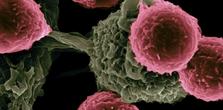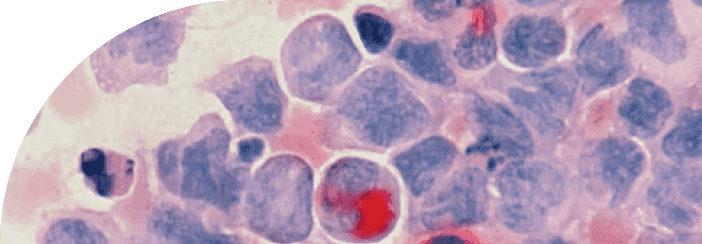
Rapamycin
The most powerful tool to stop the acceleration of aging caused by mTOR dysfunction and cellular senescence.
Mikhail Blagosklonny's theory of cellular hyperfunction has shifted our understanding of aging by proposing that it's not a result of cellular decline or damage accumulation but rather an overactive state of cellular metabolism. One of the most infamous examples of this is cancer. In a recent research perspective article, Blagosklonny outlined the role of rapamycin in slowing both the progression and delaying the onset of cancer. In this week’s research review, Jacob Rose, from the Buck Institute for Aging Research, discusses the multiple mechanisms of rapamycin that impede cancer development and formation.
rapamycin
cancer prevention
14 mins
By: Daniel Tawfik, Jacob Rose
In April of 2023, Oncotarget released a research perspective article from a well-known cancer expert, Dr. Mikhail Blagosklonny. Blagosklonny is best known for his “hyperfunction theory of aging,” which explains many aging phenotypes through the lens of inappropriate hyperactivity in our cells that leads to larger biological hyperfunctions, especially stemming from excessive growth and proliferation.
One of the most infamous examples of aberrant growth and proliferation is cancer, and with this article, Blagosklonny combines what he knows about cancer with what he knows about aging. The pharmaceutical strategy that most directly addresses Blagosklonny’s theory of aging is mTOR inhibition.
mTOR is our cells’ master growth-regulating, nutrient-sensing complex, and its inhibition has been thoroughly studied in many contexts with many different drugs, primarily rapamycin and similar molecules known as rapalogs. Rapamycin and rapalogs robustly extend lifespan and slow aging in any model organism it is given to, and the available human data is also very positive in many contexts. In his review, Blagosklonny puts together an impressive history of rapalogs and their efficacy in treating and preventing cancer.
Blagosklonny begins the article with preclinical data from dozens of mouse cancer models and experimental designs. Preclinical models are imperative to establish robust treatment strategies and mechanisms of action. Throughout the article, Blagosklonny references toxin exposure, such as Nicotine-derived nitrosamine ketone (NNK), as well as genetic models of cancer. In these genetic models, the mouse genome is purposefully altered, causing a huge increase in cancer chance, often reaching 100% cancer incidence throughout the experiment.
From all this preclinical data, Blagosklonny shows, impressively, that treatment with mTOR-inhibiting drugs slowed cancer progression in all stages, regardless of treatment start point. This means that, no matter how far along the cancer has progressed in the mice, there was a significant slowing with the rapalog.
Additionally, pre-treating mice at high risk of cancer prolonged cancer incidence, suggesting that this effect can begin as early as needed for high-risk candidates. Taking it one step further, inhibition of mTOR also delayed cancer in normal mice. This fact is relatively unsurprising because rapamycin has been extensively shown to extend lifespan and slow aging in mice; however, it is interesting to note that the positive effect is also seen in a low-risk mouse population where some mice may never get cancer.
To clarify, even normal mice will develop cancer, and even though the progression and severity were slowed, rapalogs did not and do not cure cancer. However, in many cases, that will be all we want the treatment to do. Blagosklonny recognizes that this treatment, though widely effective, will not replace many of the necessary cancer treatments that currently exist and are still in development. Interestingly, there is already some clinical human data showing similar trends and giving high-risk people meaningful, cancer-free time.
Humans are approved to take mTOR inhibitors for many different reasons, but their primary use is as a mild immunosuppressant. One example Blagosklonny gives is especially interesting: transplant patients can be prescribed mTOR inhibitors as a low-grade immunosuppressant to prevent organ rejection, and patients who take rapalogs have a lower incidence of cancer than transplant patients who do not.
Further, an immunosuppressant given to transplant patients called Cyclosporine A is known to cause skin cancer, but this incidence is lower when co-administered with the rapalog. Since this data has come out, there have been more circumstances where mTOR inhibition has been approved for use as a treatment or co-treatment in the case of high-risk patients. Among these cancers include Renal Cell Carcinoma (RCC), advanced kidney cancer (after failed initial treatment), advanced hormone receptor-negative, HER2 positive breast cancer, and well-differentiated, non-functional neuroendocrine tumors (NET).
This clinical data points to rapamycin as a cancer preventative or at least an effective drug to slow cancer progression. Blagosklonny reiterates that rapamycin and rapalogs have always been anti-aging drugs, and because cancer is a disease of aging, we should be more open to its use as such. Slowing aging will delay the progression of cancer, but how?
Blagosklonny points to the anti-proliferative nature of rapamycin and rapalogs as the major deterrent of cancer. He explains the thinking behind this by stating that early treatments of rapamycin were more effective than treatments after cancer was already detected.
He reiterates that the proactive treatments with rapalogs were more useful than the reactive treatments because, essentially, rapamycin and rapalogs will not stop cancer or cure it; they will only delay it. If you are delaying something by slowing the rate of progression, it is most effective to decelerate that effect as soon as possible.
This paradigm gives the drug more opportunity to slow disease meaningfully. He bluntly states that people will live longer, cancer-free lives but still face the challenges of other age-related diseases, like cardiovascular disease, where rapamycin is less efficiently decelerating progression. He concludes with an overarching viewpoint: rapamycin is not widely used as an anti-aging therapeutic; it is used mainly as a reactive measure to certain conditions, including cancer.
If we apply rapamycin and rapalogs to their primary function as an mTOR inhibitor with robust anti-aging effects, we will see the results in lower incidences of multiple diseases where age (and hyperfunction) is a risk factor. He notes that many healthy adults are now taking rapamycin or other rapalogs, and as long as we are diligently monitoring clinical data, we will have more information about its human efficacy in many contexts.
When we age, our body accumulates senescent cells. Senescent cells have stopped dividing but remain metabolically active. Senescence is a protective measure to stop damaged cells from dividing and becoming tumorigenic. As Blagosklonny has outlined, because these cells cannot divide when exposed to growth factors, they become hyperfunctional—they have a large morphology, are hyperactive, hyperinflammatory, and cause hyperplasia. This hyperfunction of senescent cells is also a function of the overactivity of mTOR in senescent cells.
When we are young, we can clear out senescent cells. However, our capacity to clear out senescent cells diminishes as we age. These senescent cells accumulate in tissues, including the skin, and create an environment similar to chronic inflammation.
In her ground breaking 2010 research perspective paper, Dr. Judith Campisi, from the Buck Institute on Aging Research, analyzed the tumor-promoting aspects of senescent cells. Campisi's research is dedicated to understanding and taming cellular senescence, the source of chronic inflammation implicated in major age-related diseases.
Her analysis examines the environment within which these senescent cells exist, also known as the 'microenvironment.' This microenvironment is essential because it influences how cells behave, interact with each other, and can even impact the progression of various diseases.
Senescent cells are interesting because, despite their inability to divide, they remain metabolically active and undergo a significant transformation that can harm the body. This transformation is characterized by the acquisition of what's known as a senescence-associated secretory phenotype (SASP).
Under normal conditions, cells communicate with each other by secreting various types of molecules like proteins and enzymes. However, when cells become senescent and acquire a SASP, their secretory activity changes significantly. Senescent cells start to secrete a different set of molecules, many of which are pro-inflammatory. In other words, these molecules can trigger inflammation, a key part of the body's immune response.
While inflammation is a natural and necessary part of healing and fighting off infections, chronic inflammation can be harmful and has been linked to various diseases, including cancer. By creating an environment similar to chronic inflammation, senescent cells, and their SASPs can promote the progression of diseases like cancer.
In particular, Dr. Campisi found that senescent fibroblasts, a type of cell that produces the structural framework for animal tissues, can become pro-inflammatory and contribute to tumor progression when they acquire a SASP. This finding is crucial because it implies a potential link between aging (and the accumulation of senescent cells) and increased cancer risk.
Cancer often thrives when the microenvironment becomes "permissive," or supportive, of tumor growth and aggressiveness. Changes in the composition of surrounding connective tissues allow tumors to escape the immune system's detection and to grow, invade, and spread uncontrollably. Essentially, the synergy between an altered microenvironment and the genetic changes in tumor cells enables these cells to bypass preventive measures and become fully malignant.
Due to the SASP and its toxic level of cellular secretions, senescent cells modify the tissue microenvironment in ways that could stimulate cancer development. The secreted substances of the SASP can influence neighboring cells, activating various signaling pathways that become toxic to the tissue. The SASP is not merely hyperinflammatory; it also stimulates cell growth and division of neighboring cells. Over time, senescent cells tend to accumulate in the body, particularly in tissues that regenerate and in those exposed to prolonged inflammation—senescence begets more senescence, and tissue dysfunction compounds over time.
As senescence compounds over time, the microenvironment becomes more and more supportive of tumor growth and aggressiveness.
A study published in the Journal of Aging examined the role of senescence as a causal factor in cancer formation in stromal cells. Within the skin, there are two primary types of cells at play here: stromal cells, like fibroblasts, and epithelial cells, like keratinocytes. Fibroblasts provide structural support and play a crucial role in wound healing, while keratinocytes are the primary type of cell found in the skin's outermost layer, responsible for protecting the body from environmental damage, such as UV light.
The researchers found that as fibroblasts become senescent in aging skin, they undergo changes that can lead to an increase in the proliferation (or rapid increase) of keratinocytes. Not only that, but these proliferating keratinocytes may contain DNA mutations that, under normal circumstances, the body would keep in check. However, in this inflamed, aging environment, the keratinocytes with mutated DNA can grow unchecked, ultimately leading to skin cancer. When the group cleared out senescent cells through a dermabrasion technique, they found that the skin layer was rejuvenated to a level that could prevent carcinoma initiation.
As an mTOR inhibitor, rapamycin impedes the progression of the accumulation of senescent cells and impedes the harm that they can incur. By inhibiting mTOR, rapamycin slows down or inhibits certain cellular processes, including protein synthesis and cell cycle progression. In particular, inhibiting mTOR through rapamycin reduces the toxicity of the SASP. This inhibition of mTOR has been found to have several effects that impede cellular senescence:
Reduction in protein synthesis:
Rapamycin inhibits mTOR's role in promoting protein synthesis, which can prevent the accumulation of damaged proteins and cellular dysfunction associated with senescence.
Autophagy stimulation:
Autophagy is a cellular process responsible for removing damaged organelles and proteins. By inhibiting mTOR, rapamycin can activate autophagy, promoting the removal of harmful cellular components and improving cellular health.
Cell cycle arrest:
Rapamycin-induced mTOR inhibition leads to cell cycle arrest, preventing cells from replicating when they may have accumulated damage or are in a stressed state.
Reduction of senescence-associated secretory phenotype (SASP):
The SASP is a characteristic feature of senescent cells, where they secrete pro-inflammatory molecules that can damage neighboring cells and tissues. Rapamycin can reduce the expression of SASP factors, limiting the negative impact of senescent cells on surrounding tissues.
In total, by reducing the formation of senescent cells and potentially clearing out senescent cells while also reducing the harm of senescent cells, rapamycin impedes the harmful effects of senescent cells that allow for a microenvironment that is favorable to cancer cells.
In certain diseases, especially various types of cancer, this mTOR signaling can go awry. In fact, it's been noted that over 70% of cancers have an overactive mTOR signaling pathway. Both animal studies and clinical patient data further affirm that a dysfunctional mTOR system plays a significant role in the development and growth of tumors.
This overactivation of the mTOR pathway can cause cells to grow and multiply unchecked, leading to the formation and progression of cancer. The components of the mTOR pathway are frequently found to be mutated in cancers, suggesting a clear link between this pathway and the disease.
Given the integral role that mTOR plays in the development of cancer, scientists have developed a class of drugs known as mTOR inhibitors to try and combat the disease. One such inhibitor is rapamycin.mTOR inhibitors like rapamycin work by interfering with the mTOR signaling pathway. They can slow down or halt cells at a certain stage in their life cycle, known as the G1 phase, effectively stopping them from multiplying. In addition, these inhibitors can promote apoptosis, a form of programmed cell death, which can help to reduce the number of cancerous cells in the body.
These inhibitors can also impact angiogenesis, which is the process of forming new blood vessels. Angiogenesis is critical for the growth of tumors because these newly formed vessels supply the cancer cells with oxygen and nutrients necessary for their growth and spread. Therefore, by interfering with angiogenesis, mTOR inhibitors can potentially starve tumors and slow down their growth.
So, in essence, mTOR inhibitors act as a potential multifaceted approach to tackle cancer by not only directly targeting the growth of cancer cells but also affecting the supportive infrastructure (like blood vessels) that tumors need to thrive.
As we’ve covered in previous research review articles—including our review of Joan Mannick’s trials on mTOR inhibitors and immune function—rapamycin at low-cycle doses, as is typically used in longevity protocols of rapamycin, seems to enhance immune function. This is important in the context of cancer because the immune system is the frontline defense to clear out cancer cells.
Researchers at the Curiel Lab hypothesized that the immune-enhancing effects of mTOR inhibitors could influence their clinical effectiveness against cancer. Specifically, they focused on how mTOR inhibitors could prevent cancer from forming in the first place via its immune effects.
mTOR helps regulate various immune cells and responses, including Th1 cell function and differentiation, the creation of memory T cells that protect from cancer, and the generation of cells that can either promote or suppress cancer.Th1 cells are a subset of CD4+ T cells, a type of white blood cell that plays a key role in the body's immune response. Th1 cells, in particular, help coordinate the immune response against intracellular pathogens (like viruses) and also play a role in autoimmunity.
After an infection, a small number of the T cells that responded to the pathogen become 'memory T cells'. These cells can live for a long time and provide quick and effective responses if the same pathogen is encountered again. mTOR has a role in the formation and function of these memory T cells, thus contributing to long-term immunity.
The researchers proposed that the ability of rapamycin to prevent or treat cancer might not only be due to its effects on mTOR activity in cancer cells but also its effects on the immune system.
To test this, they used the same mouse model of skin cancer and found that a molecule called interferon gamma (IFNg) and a type of immune cell (gd T cells) were both important for rapamycin's ability to prevent and treat cancer.
Specifically, IFNg (which was not dependent on rapamycin) helped bring gd T cells to the area of the skin where they could potentially combat cancer, and rapamycin seemed to enhance the anti-cancer activity of these gd T cells.
Rapamycin could also enhance the ability of human gd T cells to kill human squamous cell carcinoma cells, both in a lab dish (in vitro) and in a living organism (in vivo). This suggests that rapamycin might help improve the effectiveness of treatments that involve using gd T cells to fight cancer, which is currently being tested in clinical trials.
By blocking mTOR signaling, mTOR inhibitors like rapamycin could theoretically disrupt the abnormal growth and proliferation of cancer cells and modulate the immune system to fight cancer better.
Understanding rapamycin's role as an mTOR inhibitor with anti-aging effects may lead to more proactive applications in various age-related diseases. By utilizing rapamycin to target tumorigenic pathways, reduce senescence, and modulate the immune system, we may see lower incidences of multiple diseases where aging is a risk factor, including cancer.
As more clinical data accrues, biologists and clinicians can be more certain about things that have true or transient benefits. Blagosklonny brings forward a great case study for a more creative and extensive use of rapalogs in the clinic; undoubtedly, we will find more use cases where these drugs are truly efficient.
TAKE HOME POINTS
Renowned cancer biologist and aging expert weighs in on the use of rapamycin in cancer.
Blagosklonny efficiently outlines preclinical data for rapamycin and rapalogs as cancer treatments and preventatives.
Preclinical data and clinical data point to mTOR inhibition as an effective treatment to decelerate cancer progression.
Decelerating cancer is most effective early, as a proactive measure to delay high-risk development of tumors.
Because mTOR inhibition does not cure or completely stop cancer, it is likely most effective as a co-treatment with known cancer therapies to slow recurrence and spread.
Rapamycin and other rapalogs are, at their core, anti-aging drugs and age is a huge risk factor for cancer. Using them proactively for their primary use is likely going to provide the most benefit, but more clinical data is needed to determine where the most benefit occurs.
Citations
Latest Longevity Research Straight to your Inbox
Sign up for The Longevity Blueprint, a weekly newsletter from Healthspan analyzing the latest longevity research.
Sign up for The Longevity Blueprint, a weekly newsletter from Healthspan analyzing the latest longevity research.





